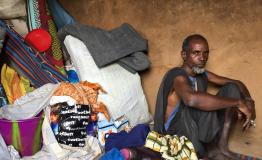

Mali
Despite widespread insecurity, due to violent clashes between armed groups, rising levels of criminality, and the proliferation of landmines, Doctors Without Borders (MSF) continued to provide medical care and relief to people trapped in remote areas of Mopti and Ségou regions, in Bandiagara, Mondoro, Koro, Douentza, Ténenkou and Niono districts. We scaled up our mobile clinics to assist both displaced people and host communities in these areas, where the availability of basic services is extremely limited.

510,900
510,9
459,300
459,3
193,098
193,098
1,700
1,7
We also worked with the Ministry of Health to treat severe COVID-19 patients in Bamako and supported the response to the pandemic across the country, while maintaining our focus on cancer care and paediatric services. In 2020, we expanded our work in oncology by facilitating early screening and diagnosis of cervical and breast cancer in the capital and providing treatment, including surgery and chemotherapy.
MSF continued to respond to epidemics in the country, such as outbreaks of Crimean-Congo haemorrhagic fever in Douentza, and measles in Timbuktu, Ansongo and Douentza. In Timbuktu, we launched a large-scale measles vaccination campaign. The seasonal peak of malaria was particularly virulent in 2020, especially in northern Mali, due to heavy rains and delays in the implementation of prevention campaigns. We maintained our support for nutrition and paediatric services in Koutiala district and launched an emergency project in Timbuktu to assist with testing and treating people for malaria.
No. staff in 2020: 1,243 (FTE) » Expenditure in 2020: €26.9 million MSF first worked in the country: 1992
